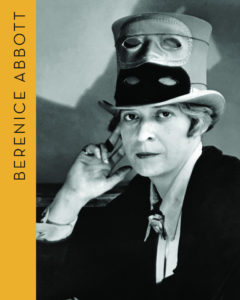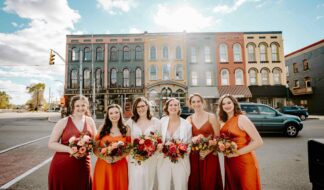 Berenice Abbott once said, "The world doesn't like independent women. Why, I don't know, but I don't care."
Berenice Abbott once said, "The world doesn't like independent women. Why, I don't know, but I don't care."
It's that attitude about life that made Abbott one of the major figures of 20th Century photography. She was best known for her striking photographs of New York City architecture and streetscapes of the 1930s featured in the iconic book "Changing New York," but she was also a sought-after portraitist.
A new publication, "Berenice Abbott: Portraits of Modernity," presents Abbott's work in three categories: her portraits, photographs of the city and scientific photographs. Presented by Fundación MAPFRE, the publication offers a journey through Abbott's career in the form of almost 200 photographs.
The opening section presents Abbott's portraits of mold-breaking individuals who changed the world from the mid-1920s onward such as writer Djuna Barnes, the New Yorker's Janet Flanner, Jean Cocteau, James Joyce and bisexual poet Edna St. Vincent Millay. The second part offers a dazzling portrait of New York which takes into account Abbott's relations with and her fascination for the work of Eugène Atget by including an introductory group of his photographs, which she printed from his negatives. The third and final section focuses on Abbott's scientific photographs, which she started to produce in the late 1940s.
Abbott's Life
Born in Springford, Ohio, after graduating from Ohio State University, in 1918 Abbott moved to New York to study journalism, but eventually decided on sculpture and painting. In 1921 she moved to Paris to study with sculptor Emile Bourdelle. In 1923-1925, she worked also with the surrealist photographer, Man Ray, before opening her own studio in Paris. Abbott photographed the leading artists in France and had her first exhibition at the "Au Sacre du Printemps" Gallery in 1926.
Abbott returned to the U.S. in 1929 and embarked on a project to photograph New York. In 1935 she managed to obtain funding for this venture from the Works Progress Administration and its Federal Art Project. Also in 1935, Abbott moved in with her lover, the art critic, Elizabeth McCausland. McCausland was a great admirer and supporter of Abbott's work and wrote several articles in praise of her photography.
In 1936 Abbott joined with Paul Strand to establish the Photo League. Its initial purpose was to provide the radical press with photographs of trade union activities and political protests. Later the group decided to organize local projects where members concentrated on photographing working class communities.
Abbott bought a house in Maine in the late 1950s, where she settled down with McCausland The two lived together for 20 years until McCausand's death in 1965. Abbott continued to photograph until she died in 1991.
Abbott was undoubtedly one of the defining portraitists of New York. Shops, people, bridges, streets, interiors, famous buildings under construction seen from outside or from above (the same ones that are visible today from the highway that runs round Manhattan) together make up this portrait.
The hardcover publication is available to purchase on Barnes & Noble , Amazon and Artbook . It ranges in price from $40-60.










